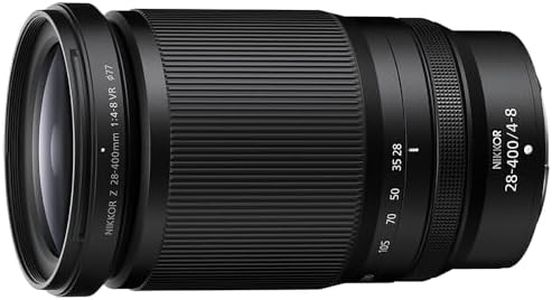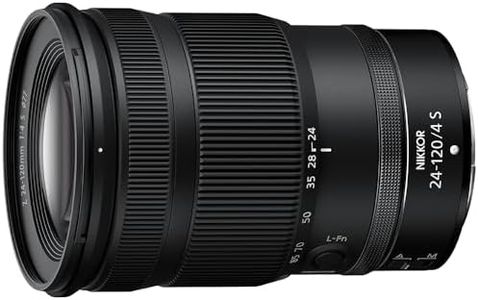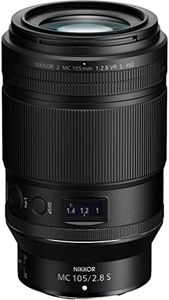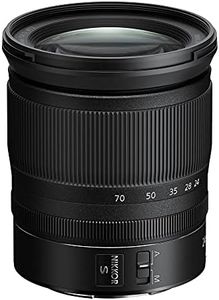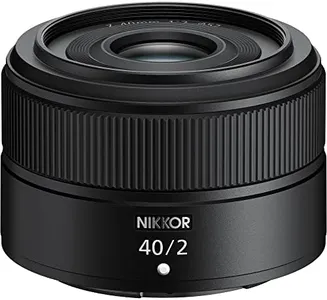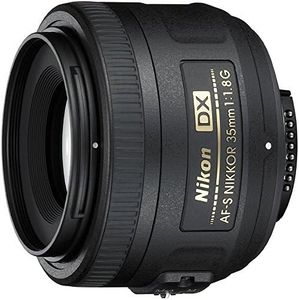We Use CookiesWe use cookies to enhance the security, performance,
functionality and for analytical and promotional activities. By continuing to browse this site you
are agreeing to our privacy policy
6 Best Nikon Lens
From leading brands and best sellers available on the web.#1
Winner
Buying Guide for the Best Nikon Lens
When you're choosing a Nikon lens, it's important to think about what you want to photograph and how you plan to use your camera. Lenses are like the eyes of your camera, and picking the right one will help you take better pictures, whether you're a beginner or more experienced. You should consider the type of photos you want to take, the situations you'll be shooting in, and how much flexibility you want with your images. Learning the main features will help you find a lens that matches your style and needs.Focal LengthFocal length tells you how much of the scene your lens will capture and how close it will make things appear. A small number (like 18mm) means a wide angle, good for landscapes or group photos because it fits a lot into the frame. A larger number (like 200mm) means a narrow angle which brings far subjects closer, ideal for sports or wildlife. Zoom lenses have a range (like 18–55mm) so you can change the focal length, while prime lenses have a fixed focal length. To pick the right focal length, consider whether you'll be photographing large scenes, people close-up, or distant subjects.
Aperture (Maximum f-number)Aperture controls how much light the lens lets into the camera, affecting both brightness and background blur (bokeh). Lower f-numbers like f/1.8 mean a larger opening, which lets in more light and gives a blurrier background, great for portraits and low-light situations. Higher f-numbers like f/4 or f/5.6 let in less light and keep more of the picture in focus, which is better for landscapes. If you often shoot indoors or like strong background blur, a lens with a low maximum f-number will be a good choice. For travel or broad scenes, a higher f-number may be fine.
Lens Mount CompatibilityLens mount compatibility means whether the lens will physically fit your Nikon camera. Nikon lenses mainly come in F-mount (for DSLR cameras) and Z-mount (for mirrorless cameras). Make sure the lens matches your camera's mount, or check if you need an adapter. Always double-check compatibility before buying to ensure it attaches and works properly with your camera.
Autofocus Motor TypeSome Nikon lenses have built-in motors (AF-S or AF-P) for quick and quiet autofocus, while others rely on the camera body for focusing. Cameras without built-in focusing motors (common in entry-level models) need lenses with their own autofocus motors if you want autofocus to work. If fast and silent focusing is important to you (like for sports, wildlife, or video), look for a lens with built-in autofocus motor.
Vibration Reduction (VR)Vibration Reduction is a feature that helps to minimize blur from shaky hands, especially useful when shooting at slow shutter speeds or with long focal lengths. Lenses with VR help you take sharper pictures in low light or when zoomed in. If you often shoot handheld in less than perfect light, or use telephoto lenses, choosing a lens with VR is very helpful.
Lens Weight and SizeThe weight and size of a lens affect how portable and easy to handle it is. Bigger, heavier lenses can be tiring to carry or use for long periods, while smaller lenses are easier for travel and quick snapshots. Depending on how much you're willing to carry, and the kind of shooting you plan to do, you might prefer compact and lightweight lenses for travel, or be okay with heavier lenses for specialized needs.
